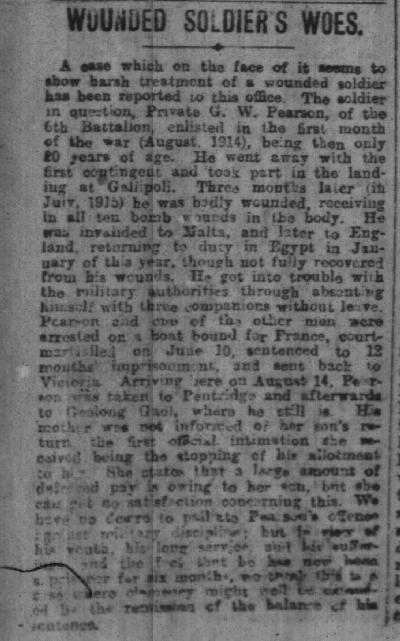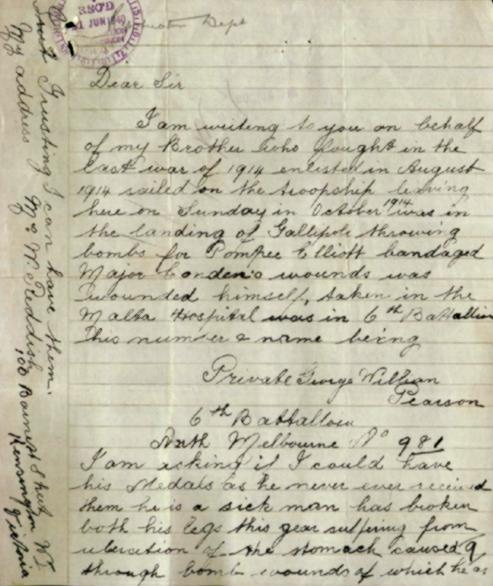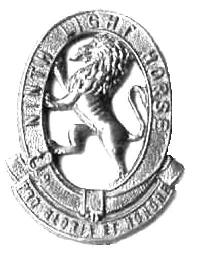Topic: GW - Propaganda
The Great War
Propaganda
The use of women for enlistment propaganda
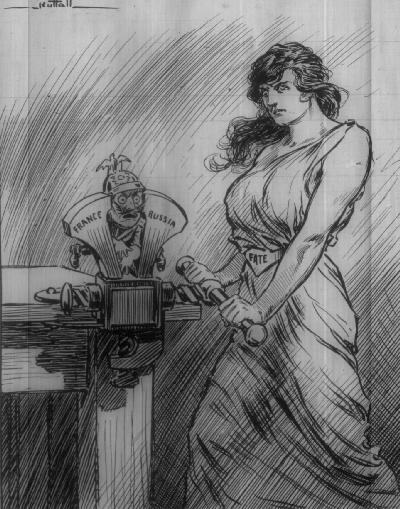
Women portrayed as "Fate"
[Melbourne Punch, 1 October 1914, p. 585.]
Boer War and Great War use of women in Australian enlistment propaganda
Each nation promoted the Boer War in their own way. Australia was no different. To entice young and single men to enlist into the mounted infantry for the near utopian emolument of half a crown per diem all found - 2/6d per day - or 17/6d per week, as a private. The re was an overseas allowance of 1/- per day making it a total of £1/4/6d per week in total, about 6/- below the ordinary labourer's pay. Quite unattractive for a single man in good steady employment. The first groups of men coming forward for service in South Africa were mainly poor and unemployed looking to get their first regular paid job. So to increase the pool of eligible candidates and get quality recruits, the best way was to tie an understated sexuality to the message. Below is a good example of an active piece of Boer War propaganda employing a woman to sell the war.
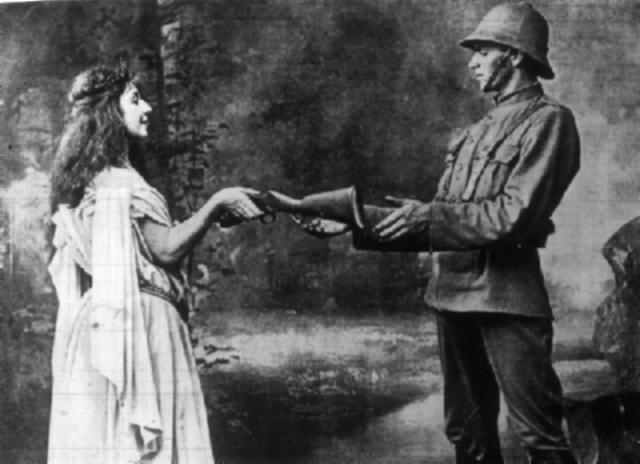
This picture immediately jumps out as it oozes sexuality in every sense of the term. No skinny, anorexic, waif like, androgynous creature as seen today regaling the contemporary magazines. This is the 1900 version of a beauty - covered in the robes of a vestal virgin accentuating all her intimate curves, replete with aquiline nose - this young lass appears to be promising steamy romance to anyone in uniform who takes a rifle from her.
Of course, the mythology is redolant. We see a sylvanian nymph or a lady of the lake passing the new sword, Henry Martini, rather than Exculiver. Whatever the call, it is up to the individual to read the story.
Who could resist the call of this siren?
The war was initially popular and seen as a romp in the park. A few brave souls might be killed but many will return as heroes. The popularity of the war waned after the first year as it became bogged down in relentless police and counter insurgency work which was never glamorous. No gallant charges, just burning houses and rounding up women and children for transport to concentration camps. The war was then unpopular and disappeared from the newspapers. So cartoons were employed.
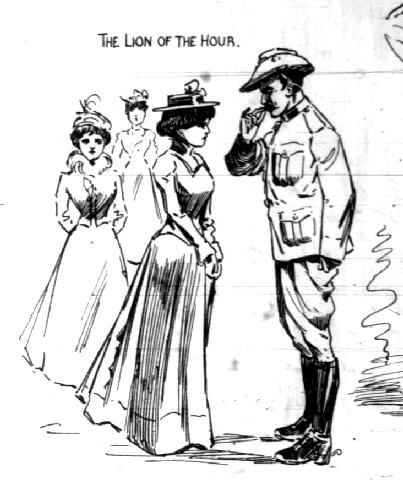
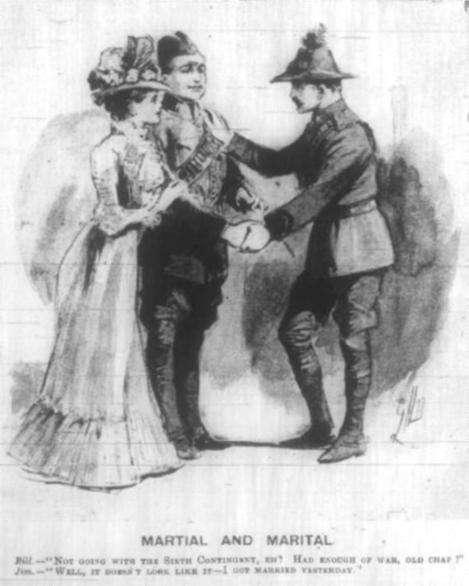
Martial and Marital
[Melbourne Punch, 24 January 1901, p. 86.]
The overall impression was that the Boer War was a game for young men to enjoy. Women were a part of the winnings.
This popular perception can be seen at the beginning of the Great War. This theme of sirens to support the war effort came to the forefront. Two common two images promoted at the beginning of the Great War.
The first image was taken in October 1914 and demonstrates a craze at the beginning of the war. There were an incredible number of pix showing women dressed as Britannia. This started almost from day one. The pic below shows a whole bevy of nubile Britannias, all trying to rule the waves from the cheering crowds.

Then other young women went to ridiculous lengths to demonstrate that they are happy to lead their menfolk into war. This pic taken in March 1915 shows a young woman dressed as Joan of Arc looking all inviting, ready to lead her admirers to Orleans and defeat the English??? Not quite sure why Joan of Arc was seen as an appropriate costume unless it was a metaphor rather than a real call to arms against the English.

These are the young things over whom the young men were supposed to swoon.
The swooning took a more sophisticated propaganda turn later on in the war. The next picture is from 1916 and could have come from Women's Weekly, although it didn't, but the message is very clear. Only women whose men went to war would remain loyal and faithful to them.
Here is the swooning swain captivated by a voluptuous siren, heeding the call to go to war with a promise to remain faithful and pure while keeping the home fires burning until the soldier returns, obviously in one piece. No cripples need apply.

These pictures demonstrate the gradual change in methods of portraying gender attraction as a military tool to enhance recruitment. This set of pictures illustrate the use of the siren leading men to war.
Here is a glamour shot of the actress and impresario, Mrs HT Kelly.

Here she is in a raunchy shot as an "It" girl, wearing an Italian uniform - or should I say her interpretation of an Italian Uniform - which was part of a show she starred in and funded in Sydney. It was a special benefit concert to raise funds for the Italian soldiers.
The shot shows everything that was considered to be steamy - a well built, buxom young lady striding upon the scene. No waif like figure here - this is someone who likes her food. All the embrace of motherhood, something a nation traumatised by hideous slaughter needed. The men needed mothering and here was the imagery to provide that need.
Further Reading:
Battles where Australians fought, 1899-1920
Citation: The Great War, Propaganda, The use of women in Australian enlistment propaganda




